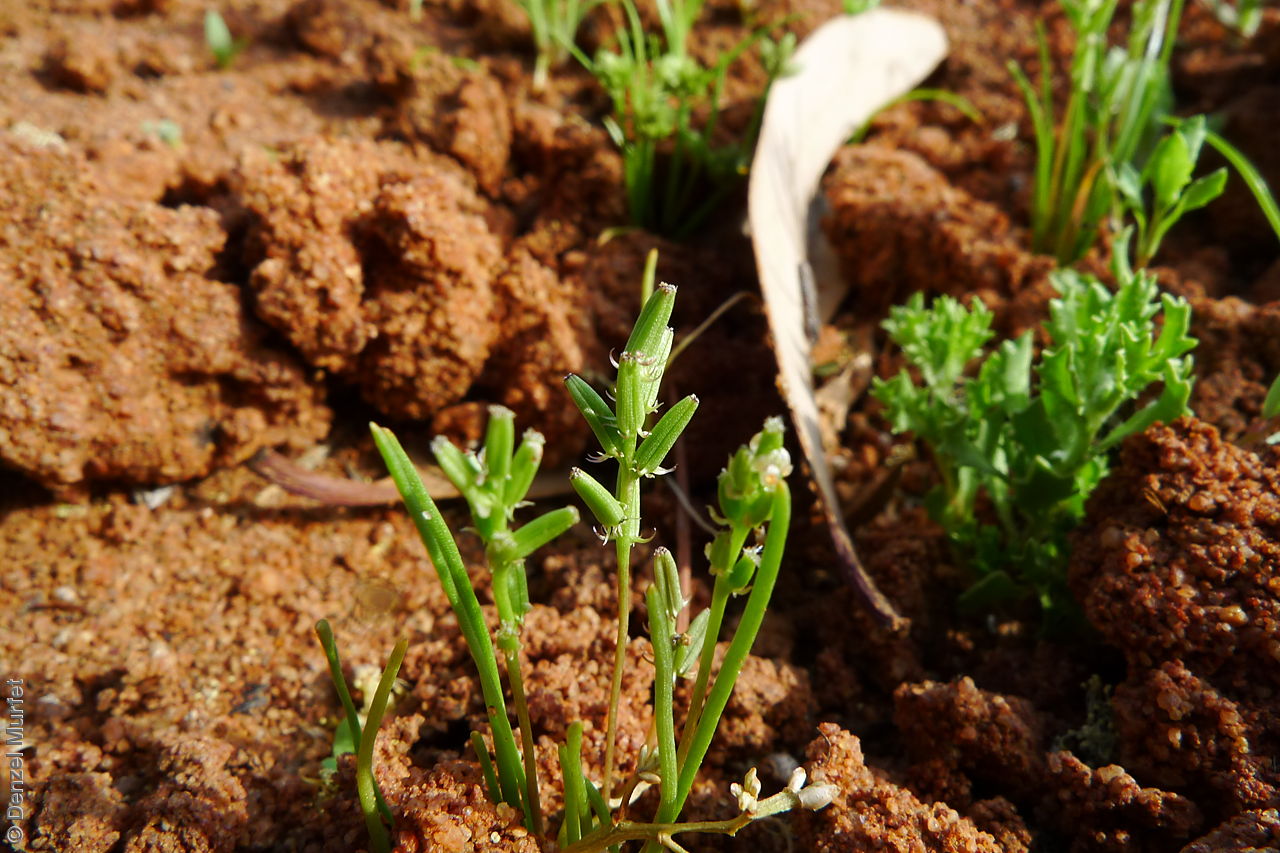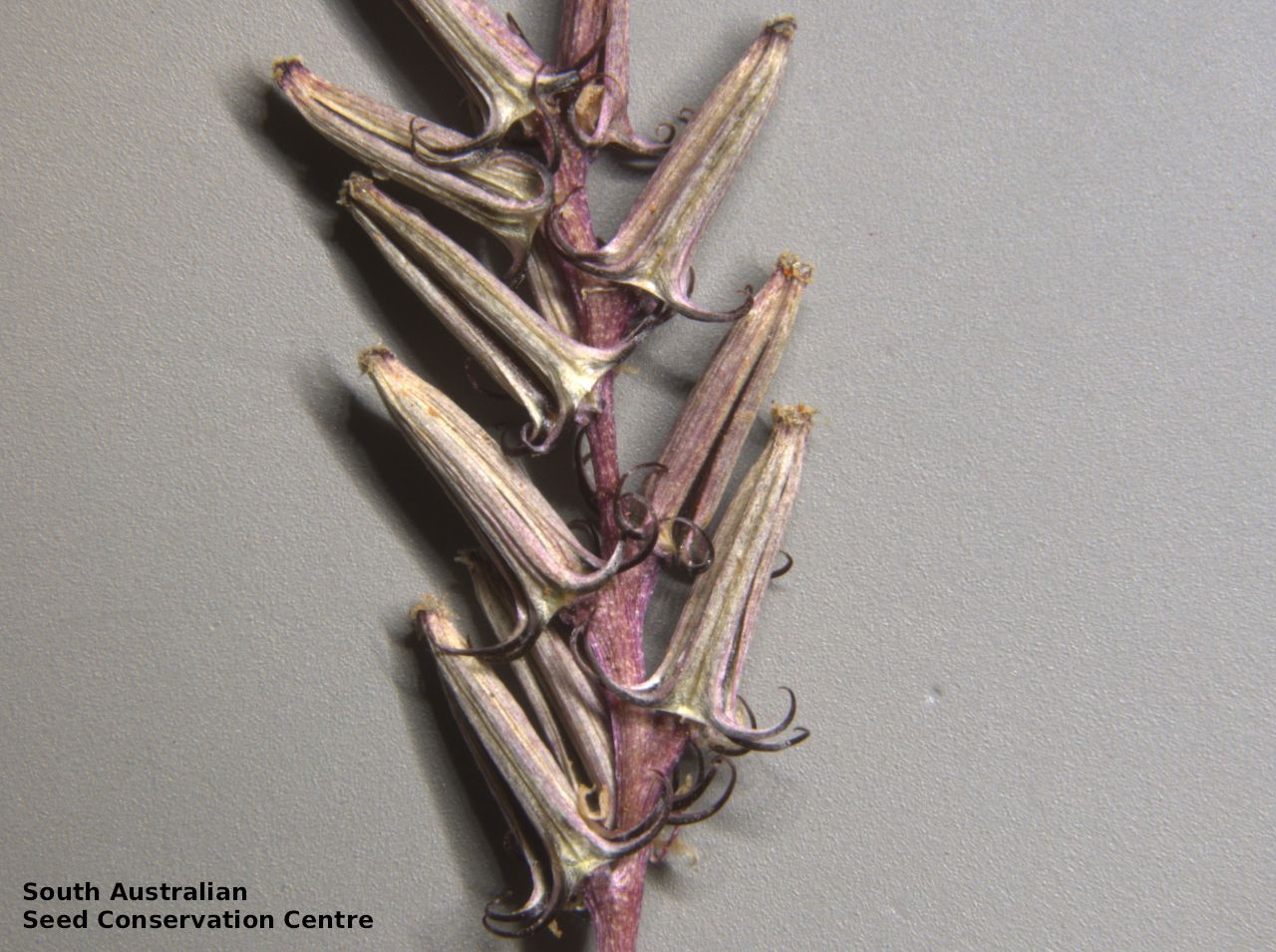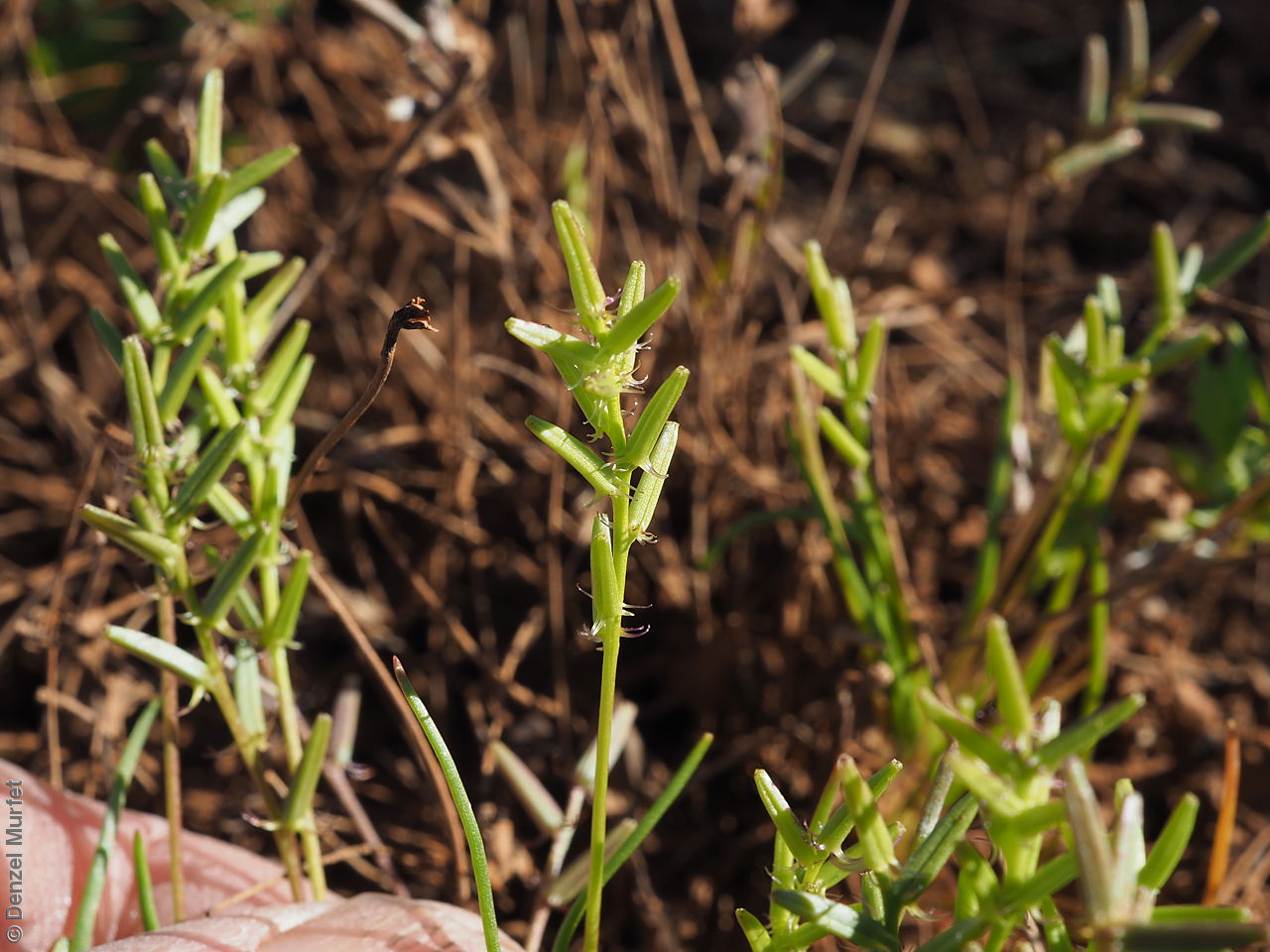














_ibra_896.png)
Prior names
Triglochin sp.A.
Triglochin calcitrapum, orth.var., partly
Triglochin calcitrapa, partly
Triglochin sp. A (N.N.Donner 3596)
Triglochin calcitrapa var. sessiliflora, nom.illeg., partly
Triglochin calcitrapum, orth.var., partly
Common names
Arrowgrass
Spurred Arrowgrass
Etymology
Triglochin from the Greek 'treis' meaning three and 'glochis' meaning a point; referring to its three-sided carpels. The species is un-named and the phrase name was used in the The Flora of Australia, volume 39 .
Distribution and status
Found in the north-eastern part of South Australia, growing on margins of pools & salt lakes, winter-wet areas and temporarily damp soil in a variety of habitats. Also found in Western Australia and the Northern Territory. Native.
Herbarium regions: Lake Eyre, Gairdner-Torrens, Flinders Ranges, Eastern
NRM region: South Australian Arid Lands
AVH map: SA distribution map (external link)
Plant description
Small tufted, upright to decumbent annual herb to 10 cm high. Leaves flat and thread-like, usually longer than the inflorescence. Inflorescence with fruiting part at the top. Flowering between June and September. Fruits are purple or straw-coloured narrowly pyramid fruit on a very short stalk with six seed segments (carpels), 3 fertile alternating with 3 undeveloped sterile ones. Seeds are purple or straw-coloured narrow wedge-shaped seed with 2 lateral spurs at the base. Seed embryo type is linear.
Seed collection and propagation
Collect seeds between August and November. Collect mature fruits either by breaking off individual spikes or by removing plants that are drying off with fruits that are straw-colour and seed segments coming apart easily. Place the fruit spikes in a tray and leave to dry for 1 to 2 weeks. Then rub the dried fruit spikes with a rubber bung to dislodge the seeds. Use a sieve to separate any unwanted material. Store the seeds with a desiccant such as dried silica beads or dry rice, in an air tight container in a cool and dry place.
| Location | No. of seeds (weight grams) | Number of plants | Date collected | Collection number Collection location | Date stored | % Viability | Storage temperature |
|---|---|---|---|---|---|---|---|
| MSB | 3,200 (2.25 g) | 100+ | 10-Sep-2008 | MJT173 Eastern | 100% |
Number of plants: This is the number of plants from which the seeds were collected.
Collection location: The Herbarium of South Australia's region name.
% Viability: Percentage of filled healthy seeds determined by a cut test or x-ray.